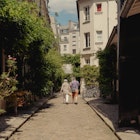
Dec 3, 2025 • 24 min read
Discover the best places to visit in Europe in 2026 – from Athens to Paris, Dubrovnik or Copenhagen. Find cultural icons, scenic escapes and top tips.

Dec 3, 2025 • 24 min read
Discover the best places to visit in Europe in 2026 – from Athens to Paris, Dubrovnik or Copenhagen. Find cultural icons, scenic escapes and top tips.

Nov 19, 2025 • 5 min read
Skiers who head to European slopes further afield reap huge rewards, including crowd-free trails, shorter lift lines and less expensive lift passes.

Nov 18, 2025 • 12 min read
Put off the January blues in 2026 by booking an off-season experience in Europe.

Nov 17, 2025 • 7 min read
Find welcome respite from winter's long nights and biting cold at 10 sunny destinations in Europe’s southern reaches.

Nov 12, 2025 • 4 min read
Any good Europe trip is full of wine, cheese and a little too much shopping. Here's how we saved up to 18% on many of our purchases.

Nov 6, 2025 • 7 min read
From budget slopes in Bulgaria to après ski in Austria, here are Europe's best places to ski.

Nov 1, 2025 • 5 min read
It's a myth that you have to spend a fortune to have a fun time on the slopes. Save your cash for après-ski drinks at these 8 budget options in Europe.

Oct 29, 2025 • 7 min read
There’s nothing quite like the restorative high from a dip in a proper thermal pool. Add to this year's travel roster these incredible European hot springs.

Oct 25, 2025 • 8 min read
Join in at the biggest party of the year with our guide to New Year's Eve celebrations in Europe.

Oct 23, 2025 • 14 min read
Europe's beauty shows up in extremes, particularly during the fall season, from volcanoes and arctic peaks to oceans and alpine mountain ranges.
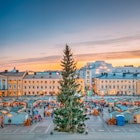
Oct 15, 2025 • 14 min read
With the sparkliest lights and in the most idyllic winter settings, these European Christmas markets will shine bright in 2025.
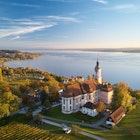
Oct 3, 2025 • 7 min read
Europe's little-known wine regions provide fabulous wines and travel opportunities.

Sep 23, 2025 • 6 min read
Forget trick-or-treating. Europeans tend to embrace the spooky side of Halloween.

Sep 18, 2025 • 6 min read
For this Halloween and beyond, here's our pick of family-friendly frights.

Aug 23, 2025 • 8 min read
See the dreamy bits of Europe, without the crowds and intense heat, by visiting in September or October.
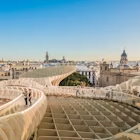
Aug 19, 2025 • 9 min read
The beauty of traveling in Europe in fall is the variety of experiences on offer. Here are the best places to go.
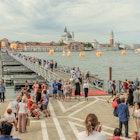
Jul 23, 2025 • 6 min read
Learn about the ETIAS visa waiver and biometric border checks coming to Europe.

Jul 22, 2025 • 4 min read
Why settle for just mountains or sea when you can have both on a trip that combines Cortina d'Ampezzo in the Italian Dolomites with Split in Croatia?

Jul 15, 2025 • 4 min read
A report from the overnight train from Brussels to Berlin, a key route in Europe’s new sleeper-train renaissance.

Jul 8, 2025 • 13 min read
Get away from the crowds in Europe at these places recommended by our team of travel writers.

Jun 27, 2025 • 5 min read
September brings a cooler and less crowded season in Europe, making it the perfect time to explore. Here are six of the best places to visit.
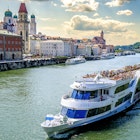
Jun 19, 2025 • 8 min read
A river cruise might be the ideal way to take all the beauty, history and charm Europe offers. Here are 10 of the best European river cruises you can take.